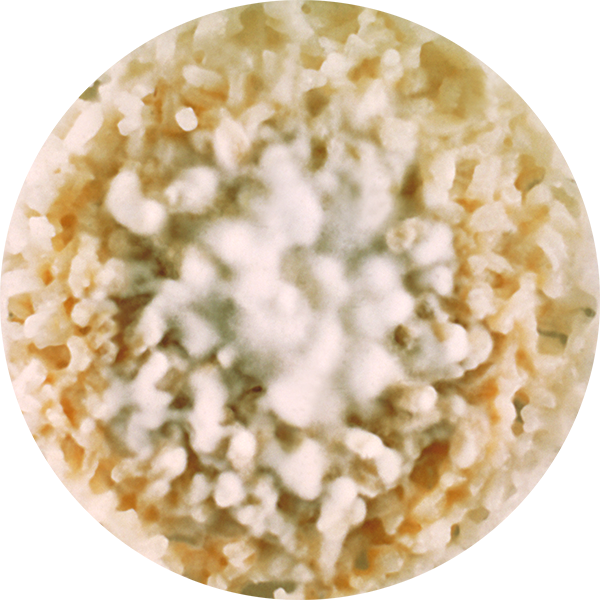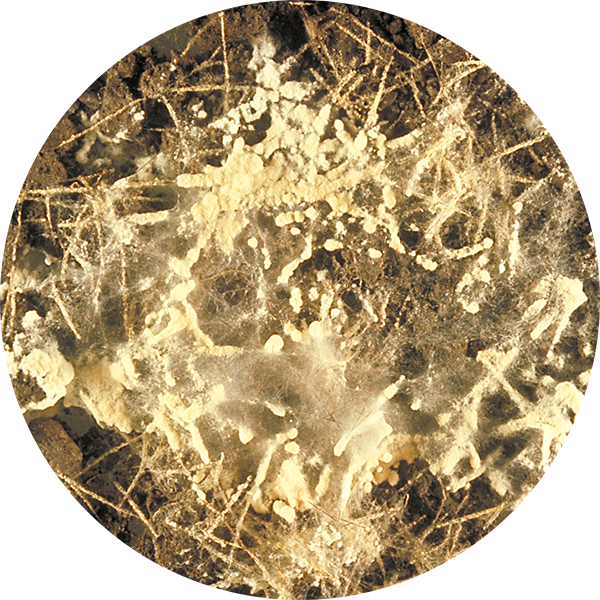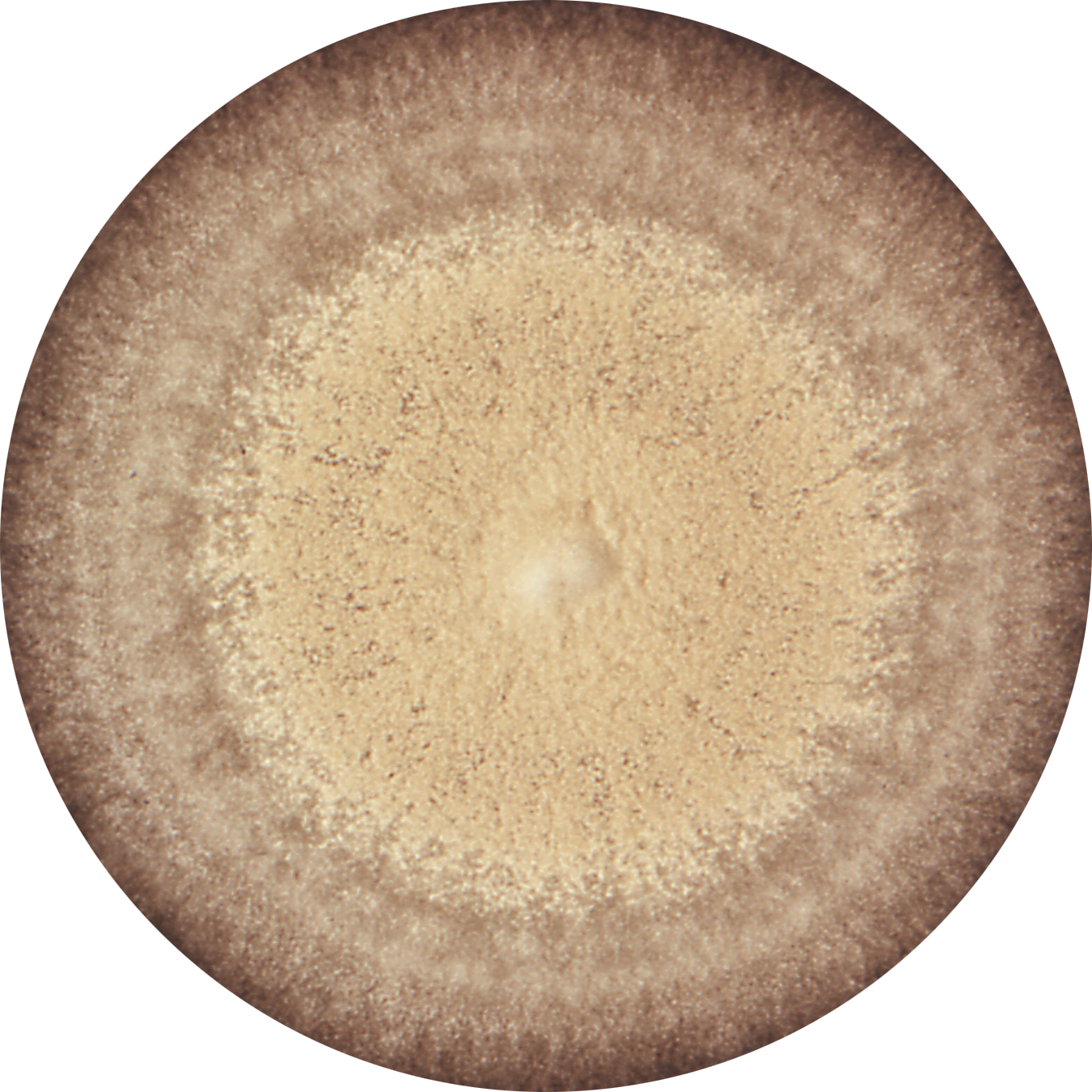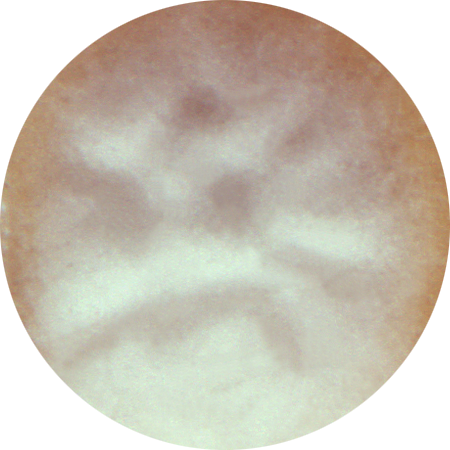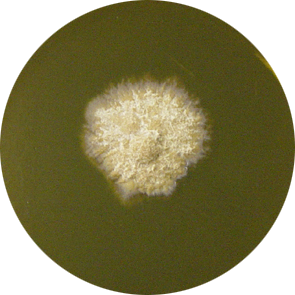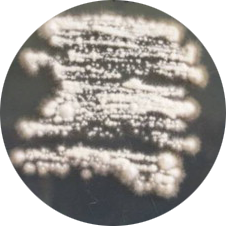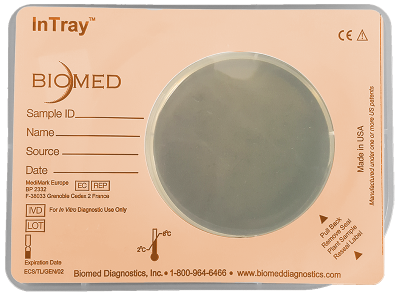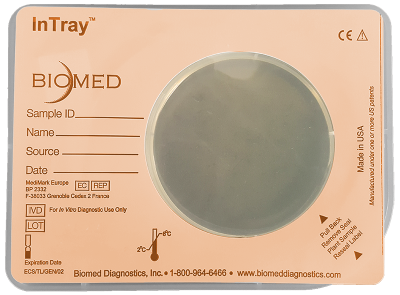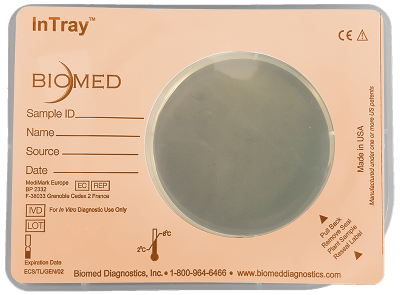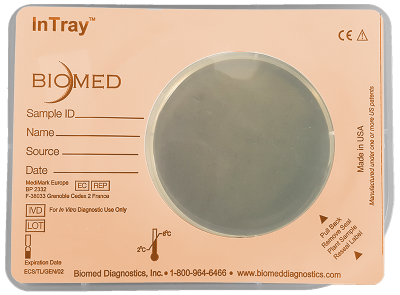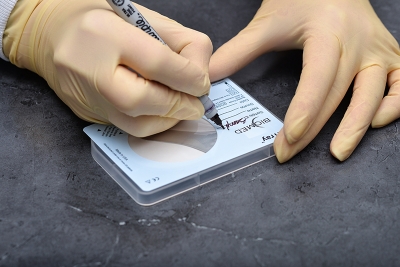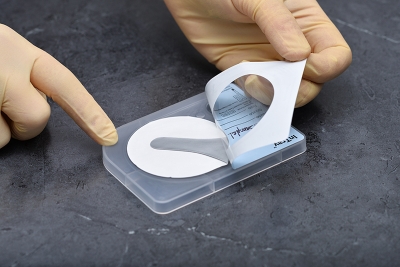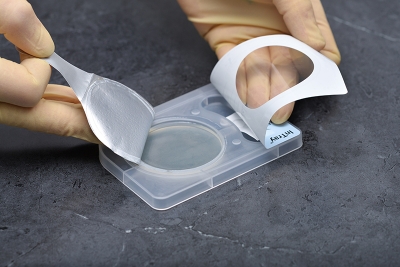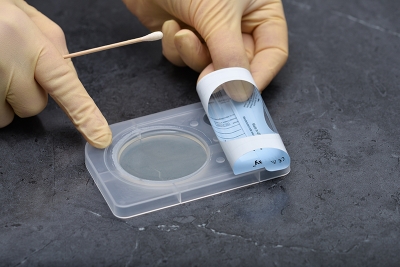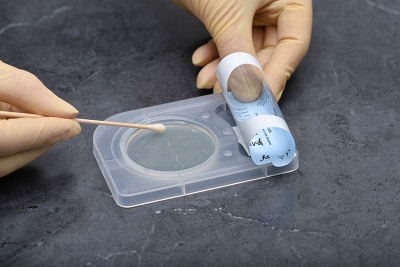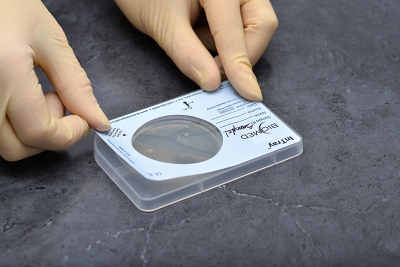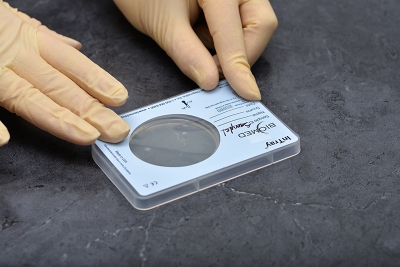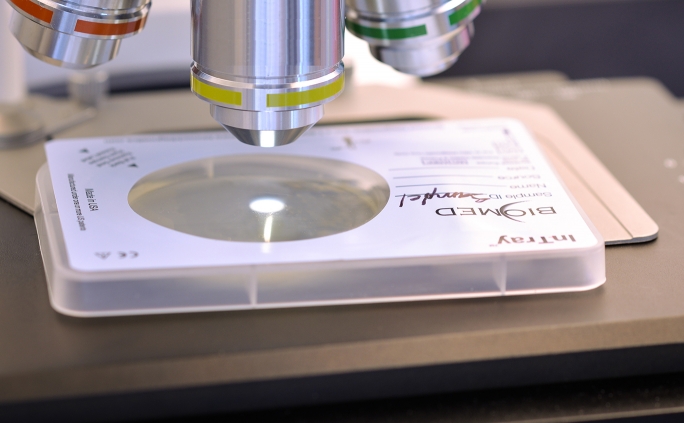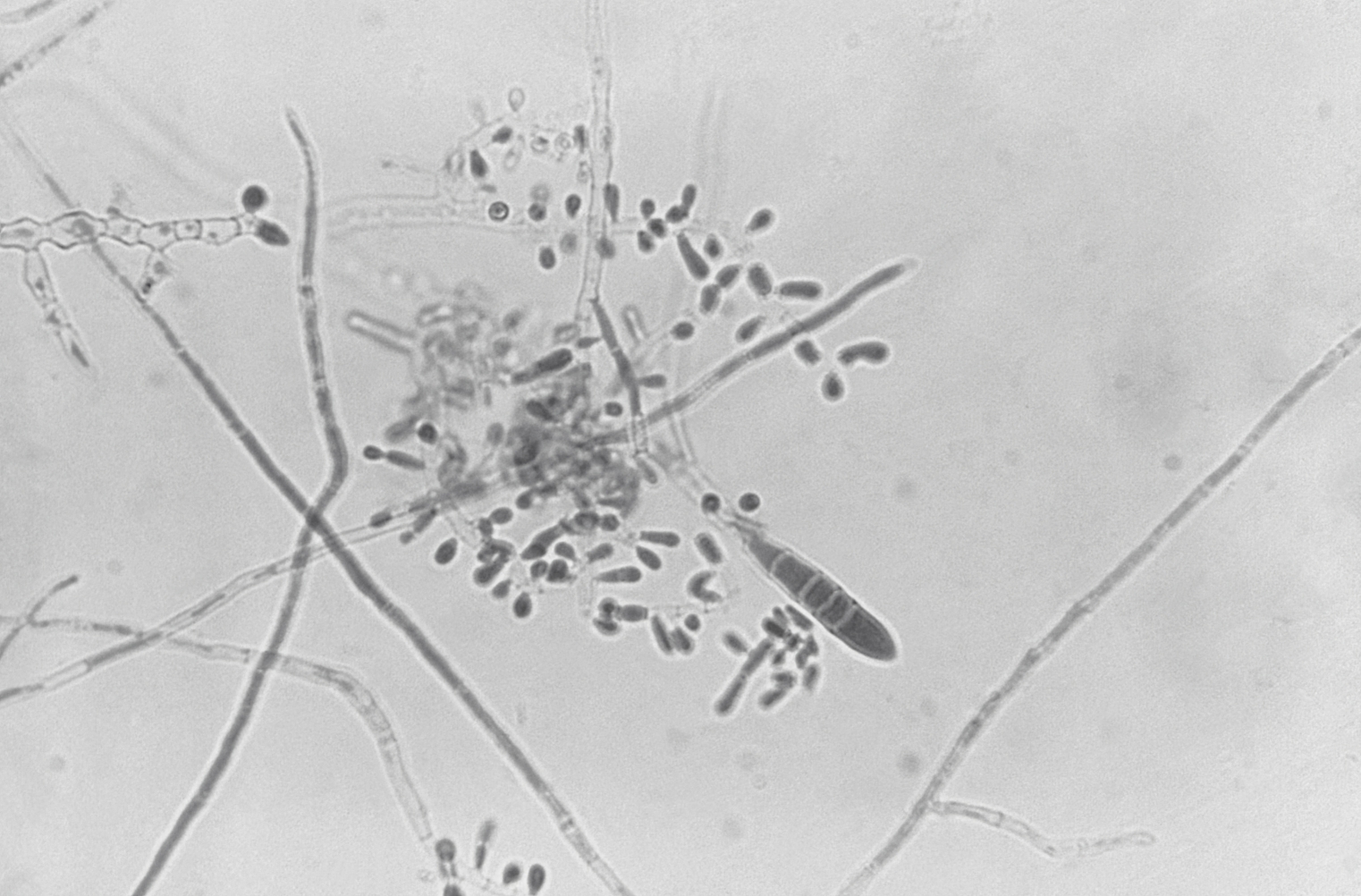
Inoculate, Culture, Result
All in one
Easy Identification with Phenol Red
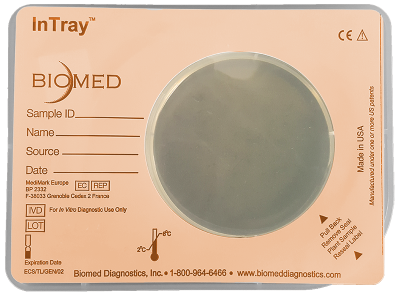

Categories
InTray® DM-FungID™
Quick Links: Specifications Detection Incubation Storage Whitepapers
Streamline your workflow with FungID
InTray DM-FungID prepared culture media serves as a microbiology sample collection, transport, and culture device. Its enriched selective medium is formulated to produce distinctive colony growth from clinical specimens with mixed microbiota. Engineered to be selective for positive growth of dermatophytes strains — all while inhibiting the growth of both gram+ and gram— bacteria, yeast and saprophytic fungi. Selective for Tinea and ringworm — commonly used to describe dermatophytes.
Combining several procedures into a single device saves time and money, while reducing exposure to collected samples. The all-new FungID products offers a larger media well for broader surface innoculation and colony growth, and can be used in tandem.
Specifications
| Product Principle |
|
|||||||||||||||||||||||||||
|---|---|---|---|---|---|---|---|---|---|---|---|---|---|---|---|---|---|---|---|---|---|---|---|---|---|---|---|---|
| Simple Convenience |
|
|||||||||||||||||||||||||||
| Accurate Detection | Specially formulated medium is selective for positive-growth for strains of multiple dermatophytes
|
|||||||||||||||||||||||||||
| Time to Result | Incubate inoculated trays for up to 14 days at 18-30°C, in the dark. Observe the trays daily for color changes through the clear viewing window. |
|||||||||||||||||||||||||||
| Storage | InTray DM-FungID expires 27 months from the date of manufacture. Upon receipt, store InTray DM-FungID at 18-25°C. Avoid refrigeration, freezing or prolonged storage at temperatures greater than 40°C. Do not use an InTray DM-FungID if the medium shows signs of deterioration or contamination. |
|||||||||||||||||||||||||||
| Specimen | Nails | Hair | Skin |
|||||||||||||||||||||||||||
| CPT Codes | 87101 87102 |
Features and Benefits
Rapid presumptive positives
FungID products contain very similar nutrients/compounds; however, the main difference is that InTray DM FungID's dermatophyte media has a ‘presumptive’ dermatophyte positive color change indicator, phenol red. This molecule gives a yellow color in acidic microenvironments and turns to red in alkali conditions. Dermatophyte fungi generally turn DM media from yellow to red as soon as the fungal colony can be seen with the naked eye.
As standard procedure, most clinical labs use SAB w/CC as their primary plating media for dermatophytes. InTray SAB w/ CC has the additional benefit of 100x magnification microscopy direct from InTray device — with no need for replating.
InTray improves efficiency because the culture can be scanned directly for fungal hyphae that have distinguishing morphology (micro/macro conidia et al) that may be worth the effort of further work-up. For some species of fungi, diagnostic morphology can be distinguished from InTray 100x magnification alone.
InTray FungID is selective for:
Research and Whitepapers
Comparative study of different microscopic techniques and culture media for the isolation of dermatophytes.
Singh S, Beena P M.
Indian J Med Microbiol [serial online] 2003 [cited 2019 May 9 ];21:21-24
Read Paper ►
Diagnostic microbiology in veterinary dermatology: Present and Future
Luca Guardabassi, Peter Damborg†, Ivonne Stamm, Peter A. Kopp, Els M. Broens, and Pierre-Louis Toutain, the ESCMID Study Group for Veterinary Microbiology
Vet Dermatol 2017; 28: 146–e30
Read Paper ►
Principles and Practices of Veterinary Technology
Margi Sirois
Elsevier Health Sciences, Jul 19, 2016
Read Paper ►
Presentations
Regulatory
⚠ WARNING: This product can expose you to chemicals including Cycloheximide, which is known to the State of California to cause birth defects or other reproductive harm. For more information go to P65Warnings.ca.gov.
